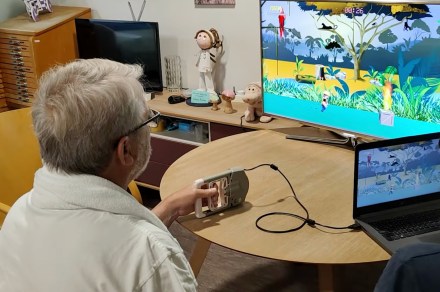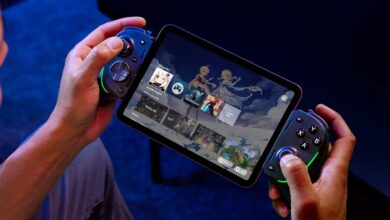Revamping Rehab: How Fun Arcade Games Are Transforming Hand Therapy

The Rise of Virtual Reality in Rehabilitation
Introduction to VR Beyond Gaming
When people think about virtual reality (VR), they ofen picture fun and games. Recently, though, there has been a growing interest in using VR for fitness and rehabilitation. This technology is proving useful not just for entertainment but also for serious medical applications.
Advancements in Medical Applications
Neuroscientists have recently introduced platforms that can assist with early detection of conditions like Alzheimer’s disease. Additionally, VR is being utilized to help patients manage pain after surgery. Doctors are now incorporating immersive training programs into their teaching methods, enhancing the learning experience.
Innovative Rehabilitation Techniques
A notable development comes from experts at Universidad Carlos III de Madrid. They are collaborating with hospitals in Barcelona and Madrid to create games aimed at helping individuals with wrist and hand mobility issues. Their approach combines exercise with gaming through a concept known as exergames.
Creating Engaging Games for Therapy
The research team has designed two arcade-style games along with a specialized controller equipped with sensors that measure grip strength and track hand movements. This system collects data on fatigue levels and reaction times, providing a comprehensive view of the patient's progress.
Focus on Hand Rehabilitation
In medical terms, this project targets rehabilitation exercises focused on various hand movements such as grasping and wrist rotation. Compared to earlier studies on exergames' effectiveness, the new eJamar platform shows critically important improvements in grip strength while promoting better limb mobility.
Extraordinary Results from Regular Use
According to one expert involved in the project, just 30 minutes of gameplay can double patients' grip strength while expanding their range of wrist motion significantly. The potential benefits extend beyond simple exercises; this platform could aid recovery from injuries or conditions like Parkinson’s disease or multiple sclerosis.
Streamlining Access to Care
This innovative approach also addresses logistical challenges related to healthcare appointments by making therapy more accessible from home settings. The eJamar telerehabilitation system saves time and costs for everyone involved in patient care.
How Does the eJamar Platform Function?
At its core is a custom controller designed specifically for measuring grip strength during gameplay activities. It integrates force sensors alongside an Arduino-based control system that tracks hand movements effectively.
Features of the Controller
The wireless controller features grooves that fit comfortably within users’ hands while providing haptic feedback during gameplay—allowing players to feel impacts or achievements within the game surroundings. it includes buttons for activating functions as well as adjusting settings based on individual needs.
Game Mechanics Designed for Recovery
One game called Peter Jumper places players within a 3D cityscape where they must navigate obstacles by squeezing grips on their controllers—a method mimicking real-life rehabilitation exercises effectively! another title named Andromeda involves piloting spaceships while shooting enemies—both designed specifically around improving grip strength and wrist flexibility through engaging play mechanics.
Why Are Games Effective Tools?
Games offer an engaging way into rehabilitation processes which can be both mentally challenging yet physically demanding to! By making therapy enjoyable rather than tedious work helps keep participants motivated throughout treatment sessions without sacrificing effectiveness!
Importance of Engagement
As noted by researchers developing these serious health-focused games: maintaining patient engagement is crucial! Using arcade-style designs encourages adherence among users who might or else struggle staying committed over long periods due boredom associated traditional therapies alone!
data Tracking Benefits
These interactive experiences do more than entertain; they also record movement data which gets added directly into each patient's electronic health records—providing valuable insights into progress made over time!
Challenges Ahead
While promising results emerge from testing phases involving certified healthcare professionals remain essential components ensuring safety protocols adhered too throughout usage scenarios presented here today!
Future Directions: Expanding Capabilities
Looking ahead towards future developments—the team aims explore augmented reality alongside existing virtual reality frameworks further enhancing capabilities offered via exergame platforms currently under review/testing stages right now!
By leveraging advancements seen across tech industries globally—they hope create even broader applications targeting diverse populations needing assistance recovering motor skills lost due injury/illnesses faced daily life situations encountered regularly everywhere around us all together collectively working towards healthier outcomes overall moving forward together unitedly striving success stories shared widely amongst communities everywhere possible!





